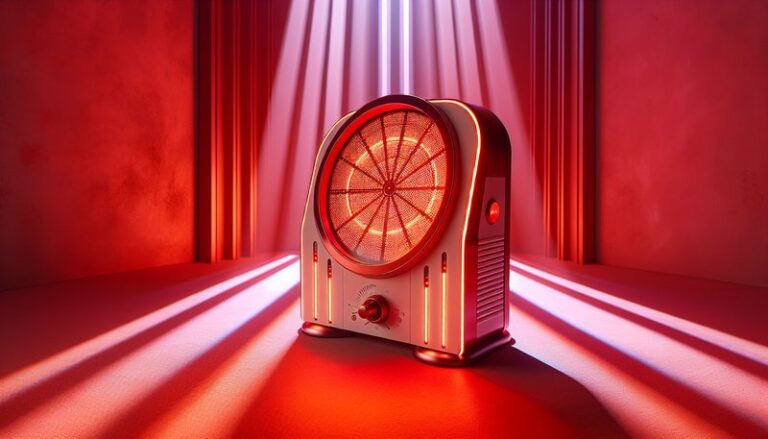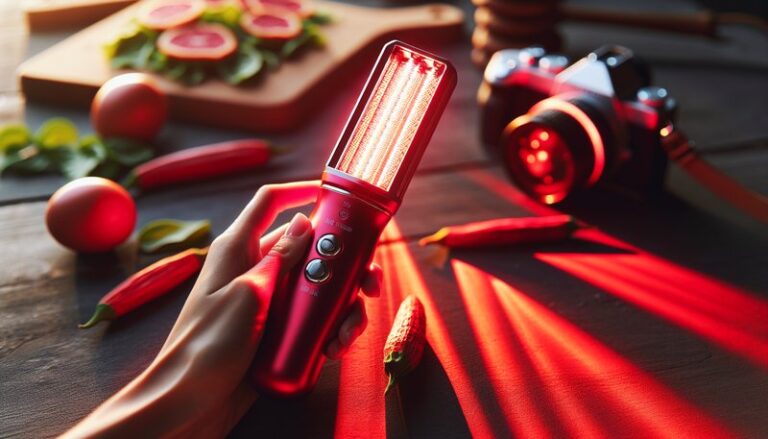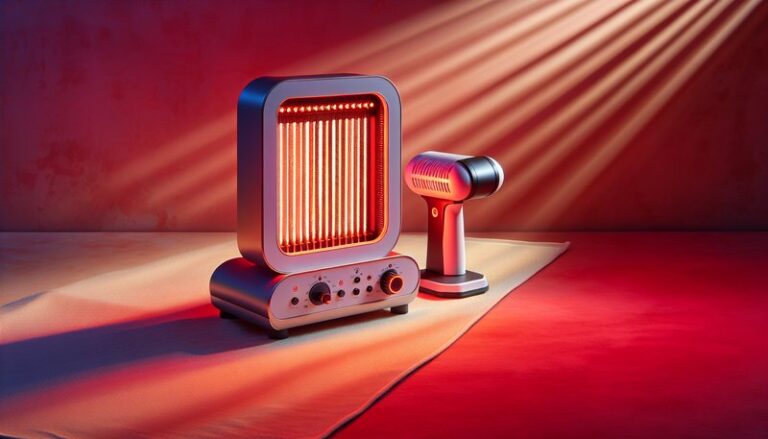Can Red Light Therapy Hurt You?
Have you ever wondered if the trending practice of red light therapy could have adverse effects? As this therapy gains popularity for its numerous health benefits, questions about its safety and potential harm also arise.
In this article, we will explore the safety of red light therapy, weigh its benefits against potential risks, and address common concerns that users may have. We aim to give you a comprehensive understanding to make an informed decision about this therapy.
Key Takeaways
- Red light therapy is generally considered safe, but improper use can lead to adverse effects.
- Benefits may include reduced inflammation and improved skin health, among others.
- Precautions should be taken to ensure optimal use and minimize risks.
What is Red Light Therapy?
Red light therapy (RLT) is a treatment that uses low-wavelength red light, typically within the range of 600 to 650 nanometers, to stimulate various biological processes in the body. This non-invasive therapy aims to promote healing, reduce inflammation, and improve tissue repair by enhancing cellular function.
RLT can be administered through various devices such as handheld units, light panels, or full-body beds. It has gained popularity in dermatology, physical therapy, and fitness recovery, making it an appealing option for those seeking natural wellness solutions.
What are the Benefits of Red Light Therapy?
Red light therapy offers multiple advantages, making it a go-to method for various health and beauty needs.
Skin Rejuvenation
RLT has been shown to enhance collagen production, which helps reduce wrinkles and improve skin texture. Clinical studies have indicated that regular use can lead to a noticeable improvement in skin elasticity and tone.
Pain Relief and Inflammation Reduction
One of the most significant benefits of red light therapy is its ability to alleviate pain and reduce inflammation. Athletes and those with chronic pain conditions often use RLT to speed up recovery after strenuous activity or injury.
Enhanced Healing
Research suggests that RLT can accelerate wound healing and promote tissue repair. For instance, patients recovering from surgeries may benefit from RLT as it helps improve blood circulation and reduces recovery time.
Mood and Sleep Improvement
Some users report enhanced mood and improved sleep quality after regular RLT sessions. The therapy may help regulate circadian rhythms and support overall well-being.
Is it Possible to Hurt Yourself with Red Light Therapy?
While red light therapy is generally safe, improper use can lead to specific complications. Overexposure to RLT can result in skin irritation or damage, particularly for individuals with sensitive skin. Additionally, using devices without appropriate eye protection poses a risk of vision damage.
What are the Advantages of Proper Use?
Properly administering RLT can lead to effective results without the risk of adverse reactions. Respecting session durations, intensity levels, and appropriate device use ensures beneficial outcomes.
What are the Disadvantages of Improper Use?
Misuse of red light therapy may lead to skin burns, eye damage, or ineffective treatment results. It’s crucial for users to follow manufacturer’s guidelines and consult healthcare professionals if uncertain about the therapy.
What are the Things to Consider Before Using Red Light Therapy?
Before engaging in red light therapy, there are important factors to keep in mind to maximize safety and effectiveness.
Skin Type and Sensitivity
Individuals with sensitive skin need to assess their tolerance to RLT carefully. Conducting patch tests can help determine if the skin reacts negatively to the light.
Intensity and Duration
Choosing the appropriate intensity and duration of exposure is crucial for safety. It’s often recommended to start with shorter sessions to gauge individual responses.
Underlying Health Conditions
Consultation with a healthcare provider is advisable for individuals with underlying conditions, such as skin diseases or those on medication that increases sunlight sensitivity.
Equipment Quality
Using high-quality, FDA-approved devices is critical for ensuring safety and effectiveness. Avoiding subpar devices can significantly reduce the risk of adverse effects.
Check out our deep dive Red Light Therapy for Weight Loss
What are the Alternatives to Red Light Therapy?
If you’re considering alternatives to red light therapy, several options can provide similar benefits.
Low-Level Laser Therapy (LLLT)
Similar to red light therapy, LLLT uses low-level lasers to treat various conditions. This therapy enhances tissue healing and reduces pain.
Therapeutic Ultrasound
This technique utilizes sound waves to promote healing and relieve pain in soft tissues and joints, making it an effective alternative for physical therapy.
Cold Therapy (Cryotherapy)
Cryotherapy helps to reduce inflammation and pain by applying cold temperatures. It’s often used in athletic recovery and post-surgery rehabilitation.
Topical Treatments
Various creams and ointments that contain active ingredients, such as arnica or CBD oil, can alleviate pain and inflammation, providing non-invasive alternatives to RLT.
Conclusion: Is it Recommended to Use Red Light Therapy?
Red light therapy generally presents a safe and effective option for various health and aesthetic concerns. While there are potential risks associated with improper use, adherence to guidelines and precautions can minimize such risks.
If you’re considering red light therapy, consult with a healthcare provider for personalized recommendations based on your specific needs and health status.
Get insights from Can Red Light Therapy Induce Melasma?
Frequently Asked Questions
Can everyone use red light therapy?
Most individuals can safely use red light therapy, but people with certain health conditions or medications that increase light sensitivity should consult a doctor first.
How often should I use red light therapy?
For optimal results, many users find 2-3 sessions per week effective. However, frequency may depend on individual goals and device specifications.
Do I need eye protection during treatment?
Yes, it is recommended to wear eye protection during red light therapy sessions to prevent any potential damage from the bright light exposure.
Are there any long-term effects of using red light therapy?
As of now, long-term studies are limited, but current evidence suggests that red light therapy is safe for extended use, provided it follows recommended guidelines.
Is red light therapy effective for all skin types?
Most skin types can benefit from RLT, but results may vary. Those with certain skin conditions should seek professional advice before starting therapy.





